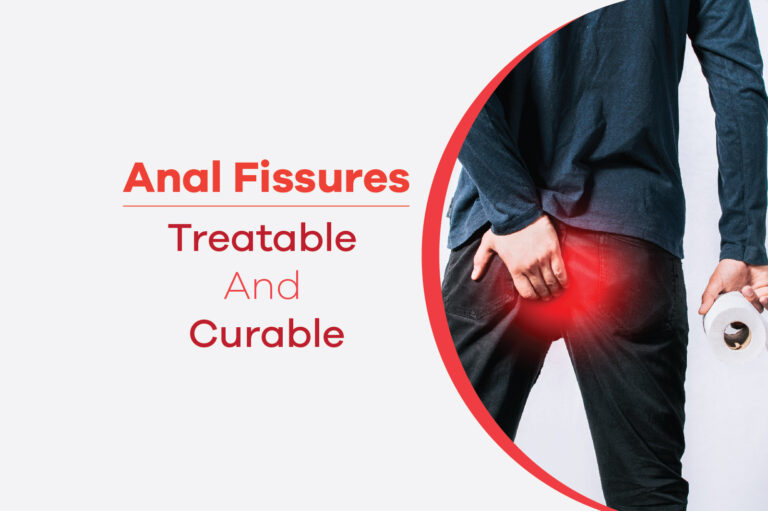An anal fissure is a rupture or a tear in the anal canal lining, which the last part of your large intestine, and where the stool passes out of the body. Few symptoms are itching, bleeding, and pain during bowel movements. In some cases where superficial fissures occur because they cause pain, but heal on their own. Deeper fissures when chronic may need treatment from a physician.
If you are here looking for how to cure fissure permanently, then you’re at the right place. Few home remedies for fissures that are helpful for acute conditions can be eating more fiber, drinking more water, using a stool softener, and using a sitz bath. In case of more pain consult a local anesthetist and seek medical advice to reduce pain. While suffering from this problem a lot of discomfort in day to day activities and reduced quality of life, it is not possible to treat fissure at home with simple remedies. It is advised to consult your doctor if blood is seen in the stool.
Causes of Anal Fissures
They are caused by some trauma in the anal canal. These tears or rupturing of the rectum can happen to anyone but it is usually seen in the younger and healthy. It is usually caused due to pressure on the anal cavity; the reasons could be driving, most of the sitting jobs, leading a stressful life, are commonly seen. Uncomplicated fissures are called primary fissures.
A fissure can be caused by heavy constipation, high pressure on the anal cavity muscles such as long driving in their day to day life, etc. They may also occur during childbirth, or after difficult child delivery. Earlier in a few cases, it was considered that most fissures are caused by straining to pass the stools and uneasy bowel movements, but now, however, it’s known and the tone of the sphincter muscle can cause chronic fissures. Excessive pressure on the anal cavity can cause these, which turn into more painful, more stressful life and spasms, potentially causing a fissure to become chronic.
Few conditions that are associated with primary anal fissures include:
- Chronic constipation
- Hypothyroidism
- Obesity
- Tumors
In a few other cases, fissures are caused along with some other chronic health conditions such as tuberculosis or TB, HIV/AIDS, inflammatory bowel syndrome or IBS, etc. Sometimes, fissures associated with these diseases take more time to heal or require intervention such as surgery. Anal fissures become more painful when they are chronic, but there is still a need to have bowel movements while healing. It is essential to keep stools soft and pass easily in the tract to avoid discomfort.
In addition, there are some measures you can take that may help in not only reducing the pain but also in healing the fissure quickly.
Natural Remedies for Fissures
1. Sitz Baths
It means sitting in a tub of lukewarm water to reduce the pain and get relief, but it may not speed healing of the anal fissure. For these plastic tubs can be purchased from the local drug stores from any available online platforms, stubs are filled with lukewarm water and usually recommended that a sitz bath is used for about 10 to 15 minutes at a time, preferably 2 to 3 times a day. Doctors prescribe some drugs or Epsom salt as additives into the water. These additives help in reducing the pain, itching, get relief from discomfort, and to clear the infections.
2.Eating More Fiber
The American Heart Association recommends that most adults eat between 25 and 30 grams of fiber each day. However, many adults in the United States do not achieve this goal on a daily basis. It is suggested to add more fiber to the diet because the fiber in the food helps to prevent stools from being hard and ease bowel movements. A soft, easily passed stool will be less painful on the fissure and stop it from becoming more severe and irritated.
Some Examples of High Fiber Foods Include
- High fiber bran cereal
- Beans (kidney, yellow, white)
- Shredded wheat cereal
- Split peas
- Chickpeas
- Lentils
- Artichoke (globe or French)
- Pigeon peas
- Cowpeas
- Wheat bran flakes
- Pumpkin seeds
- Soybeans
- Plain rye wafer crackers
- Avocado
Fiber Supplements
If enough fiber isn’t taken in a day through food, a fiber supplement may help. Fiber supplements come in various forms with some of the common main ingredients being psyllium husk, methylcellulose, and polycarbophil. Consult a nutritionist and take a proper diet plan for a fiber supplement in the food. It is suggested to start slowly with fiber supplements, and gradually increase the amount daily to avoid side effects such as coating and gas. Fiber supplements can be used for other health complications such as constipation and diarrhea.
3.Stool Softeners
A stool softener may help in preventing constipation. Stool softeners are not laxatives, are usually considered safe, and have negligible side effects. These agents help pull more water into the digestive tract or the intestines, which softens the stool.
Many forms of stool softeners are available in the market as tablets and liquids. Stool softeners are generally used for a week. Other important lifestyle changes should be made to help with constipation to discontinue the stool softeners. Check with a doctor or healthcare provider about over-the-counter stool softener you can use.
4.Drinking More Water
Staying hydrated will help overcome the problem of constipation. Drinking sufficient water can help keep the stools soft and easier to pass. Foods rich in water content can also contribute to your water intake goal.
The amount of water needed in a day varies from person to person, but generally, it’s recommended for men to drink about 13 cups and women about 9 cups. More water is needed based on physical workouts, especially after exercise or when pregnant or breastfeeding.
Only your body can tell you or indicate how much water is needed. When stools are soft and easily pass through the track, it means you’re taking enough water in a day.
Some Foods with High Water Content Include
More water containing foods such as broccoli, cabbage, cantaloupe, celery, cucumber, lettuce, spinach, strawberries, sweet peppers, tomato, watermelon, and zucchini.
Caring for Perianal Skin
It can be challenging to clean the area due to the fissure. If wiping is causing pain, use a hand shower to in a gentle way. Instead of toilet paper, use mild and fragrance-free wet wipes to clean.
Ayurvedic Treatment for Fissure
There is an ayurvedic treatment for fissures available too if you want to try it. This may feel easier than directly undergoing surgeries.
Laser Treatment for Fissure
If none of the above remedies and options work, you may have to take it seriously and visit Laser Piles Clinic. Getting laser treatment for fissure may sound scary, but it actually isn’t. It doesn’t need hospitalization either.
Anal fissures are embarrassing, painful, and may have a detrimental effect on the quality of life. Fortunately, most anal fissures are “acute” and heal on their own easily at home. The key is to scale back the discomfort while promoting healing within the area.
Treating fissures should be through with the assistance of a physician, albeit they’ve been a drag in the past and it looks like the same treatment has been prescribed again. So, it’s best to continue the treatment without breaks in between.
With the help of a good healthcare provider, try to heal fissure avoiding long-term problems, and prevent it from becoming chronic.
Schedule an appointment today. Call us: 910 850 3674, Email: support@laserpiles.com


